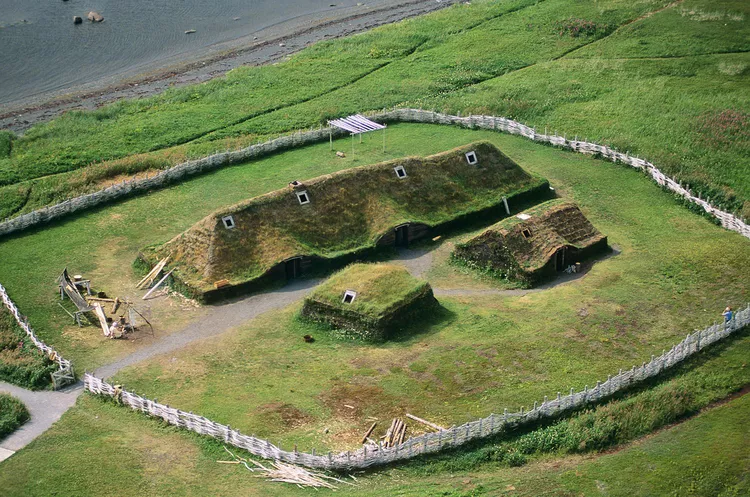Summary

A visit to L’Anse aux Meadows (pronounced “lance oh Meadows”) represents not merely a step back in history; it signifies a convergence of the Old World and the New. Two distinct groups of humans, originating from common ancestors, traversed in opposing directions—one journeyed through Africa, Asia, and Europe before traversing by ship to the Americas, while the other migrated from Africa to Asia and across a land bridge to Alaska, entering the New World. At Newfoundland’s L’Anse aux Meadows, one can witness the historical juncture where these two groups intersected for the first time since their initial separation.
L’Anse aux Meadows encompasses more than a National Historic Site; it encapsulates a vibrant modern-day village at Hay Cove, replete with accommodations, dining options, and abundant natural splendor.
The Norse settlers were not the sole inhabitants who recognized L’Anse aux Meadows as a favorable locale for living and fishing. Indigenous Peoples originally settled in this area around 3950 B.C. Leifr Eiriksson (Leif Ericsson) and his party of Norse settlers were relative newcomers, having arrived around 1000 A.D.
Visitor Centre at L’Anse aux Meadows

The Visitor Centre, renovated in 2010, is situated on a hillside overlooking the archaeological dig site and replicas of Norse structures.
Exhibits feature the charter documents from the World Heritage Site as recognized by UNESCO, artifacts unearthed by Helge and Anne Stine Ingstad and their archaeological teams, along with models of the Norse settlement site and excavation findings.
Replica of Norse Longhouse

Following the excavations conducted by Helge and Anne Stine Ingstad from 1961 to 1968, the Norse settlement at L’Anse aux Meadows was re-turfed to ensure its preservation.
Parks Canada established the Viking Encampment adjacent to the excavation site, employing traditional Norse construction techniques to demonstrate how ancient Norse settlers might have lived. Visitors may now explore replicas of a Norse longhouse, a small house/workshop, a hut, and a furnace.
Site of Norse House

Visitors can choose to explore the archaeological site independently or with a Parks Canada ranger. Informative signage indicates the locations of the excavated structures.
A ranger-led tour, which lasts approximately one hour, serves as an excellent introduction to a visit to L’Anse aux Meadows. Participants will gain insights not only into the excavations but also into the Norse explorers who ventured to this region in search of “Vinland,” a land known for its wild grapes, butternuts, and timber forests.
Replica of Norse Boat

During the era when Leif Eiriksson and his expedition settled in L’Anse aux Meadows, the Norse utilized various types of boats.
This particular type of vessel, a replica of a Norse faering, would have been employed to transfer individuals and goods between larger ships and to navigate the nearby coastal waters.
Weaving Loom

During the excavations at L’Anse aux Meadows, stones utilized for a Norse loom and a drop spindle whorl were uncovered, indicating the presence of women in the settlement.
This loom replicates the style that may have been utilized in 1000 A.D. and employs stones as weights. Archaeologists theorize that female Norse settlers crafted sailcloth on a loom similar to this one. Additionally, a whetstone and a fragment of a bone needle were recovered from the site, further supporting the notion that women engaged in weaving and sewing activities at L’Anse aux Meadows.
Meeting of Two Worlds Sculpture

Meeting of Two Worlds vividly depicts the historical interaction between Norse explorers and Indigenous Peoples at L’Anse aux Meadows.
This sculpture, created by Luben Boykov and Richard Brixel, symbolizes the culmination of a millennium-long journey for humanity, originating from points in the east across Asia and North America and from the west through Asia and Europe, converging at this new site in Newfoundland.





